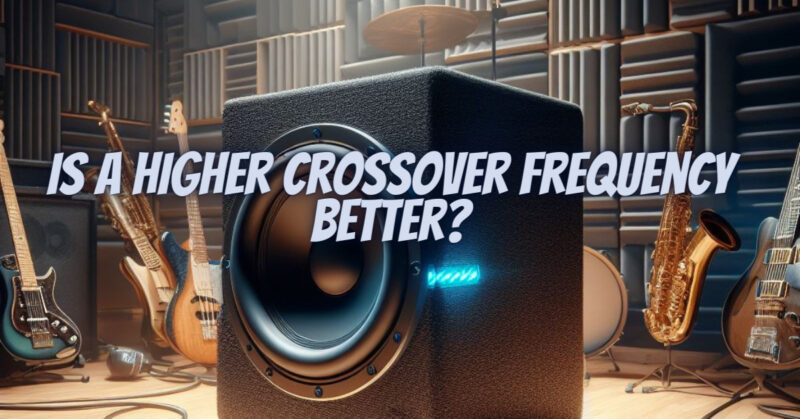Whether a higher crossover frequency is better is a matter of debate among audiophiles and home theater enthusiasts. There are advantages and disadvantages to both high and low crossover frequencies.
Advantages of a higher crossover frequency
- More precise bass reproduction: A higher crossover frequency can result in more precise bass reproduction, as the subwoofer will be reproducing a narrower range of frequencies.
- Less localization of bass frequencies: A higher crossover frequency may result in less localized bass frequencies, which means that the bass may sound like it is coming from all directions, rather than from the subwoofer itself.
- Reduces stress on main speakers: A higher crossover frequency reduces the amount of low bass frequencies that the main speakers have to reproduce. This can help to extend the lifespan of the main speakers and reduce the risk of distortion.
Disadvantages of a higher crossover frequency
- Less bass extension: A higher crossover frequency limits the amount of bass extension that your system is capable of.
- Transition between subwoofer and main speakers may be more noticeable: A higher crossover frequency may result in a more noticeable transition between the subwoofer and the main speakers.
- More likely to cause phase cancellation: A higher crossover frequency is more likely to cause phase cancellation, which can muddy the sound.
Whether a higher crossover frequency is better for you depends on a number of factors, including:
- The type of speakers you have: If you have a pair of full-range main speakers, you may be able to get away with using a higher crossover frequency. However, if you have a pair of smaller satellite speakers, you may need to use a lower crossover frequency to avoid overloading the main speakers.
- The size of your room: If you have a small room, you may want to use a higher crossover frequency to avoid localized bass frequencies. However, if you have a large room, you may want to use a lower crossover frequency to ensure that the bass is evenly distributed throughout the room.
- Your personal preferences: Some people prefer a more precise bass response, while others prefer a more extended bass response. Ultimately, the best way to choose the right crossover frequency for you is to experiment and see what sounds best to you.
Here are some general guidelines:
- If you are looking for the most bass extension possible, use a lower crossover frequency.
- If you are concerned about phase cancellation or you have a pair of smaller satellite speakers, use a higher crossover frequency.
- If you have a small room, use a higher crossover frequency to avoid localized bass frequencies.
- If you have a large room, use a lower crossover frequency to ensure that the bass is evenly distributed throughout the room.
- Start with a crossover frequency of 80Hz and adjust it up or down depending on your preferences.
Tips for setting the crossover frequency:
- Use a test disc or a pink noise generator to help you set the crossover frequency.
- Play music that has a lot of bass and listen for the transition between the subwoofer and the main speakers.
- Adjust the crossover frequency until the transition is as smooth as possible.
- Experiment with different crossover frequencies to see what sounds best to you.
Remember, there is no one-size-fits-all answer to the question of whether a higher crossover frequency is better. The best crossover frequency for you will depend on your specific system and your personal preferences.


